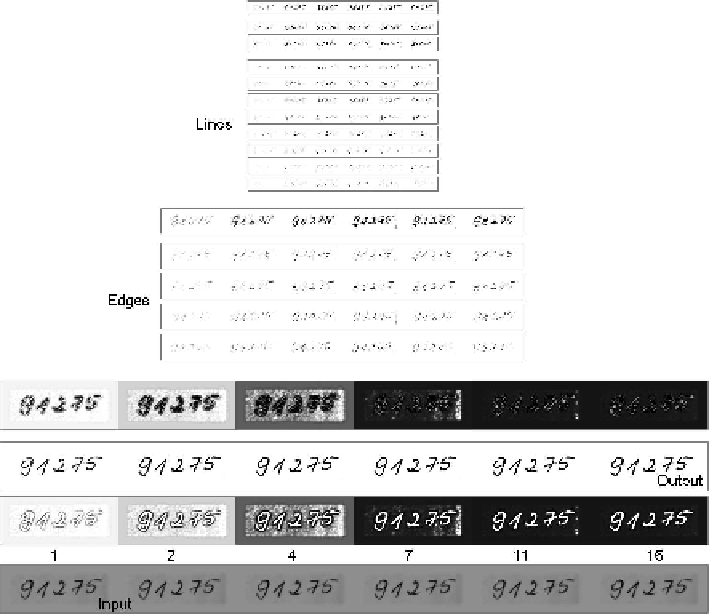Information Technology Reference
In-Depth Information
Network Dynamics.
In the preceding figures, the steady-state response of the bi-
narization network to a test pattern was shown. In contrast, Figure 4.16 shows the
network activity over time when an example ZIP code image is presented at the
input array. One can see that the initial response of the feature detectors after the
first iteration is relatively weak. In subsequent iterations, the features cooperate and
compete with each other until the hierarchical representation remains stable.
While the binarization of the lines and their immediate neighborhood is decided
quickly, the network needs some more iterations to decide that locations far-away
from the lines belong to the background. This is visible most clearly in the lower
right corner of the image where non-uniform lighting created a contrast between the
dark paper and the added frame.
Figure 4.17 shows the stable foreground feature response to the difficult exam-
ples from Figure 4.11(a). Some additional input/output examples of the network's
operation are shown in Figure 4.18. One can see that the network is able to solve
the binarization task much better than the thresholding method. It is able to assign
Fig. 4.16.
ZIP code binarization - activity over time. The initial response to the image is
weak. Features on different hierarchical levels cooperate and compete until a stable represen-
tation remains. Most difficult is the assignment of locations far-away from the lines to the
background.

Search WWH ::

Custom Search